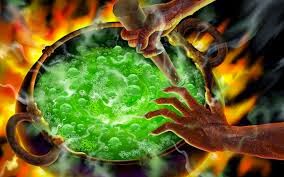Dinner Parties have been popular since the medieval era, and perhaps even before. After this, the visual appearance of food became important for the host. Many middle-class Victorian families used dinner parties as an opportunity to display their status and wealth. A typical Victorian dinner party was obsessed with the visuals, from the table plan to the food. In this post, I wish to answer the question: Why was the visual aspect of food so important at dinner parties?

Dena Attar
suggests the mid-Victorian era was "a period when the visual appearance of
food took precedence over considerations of taste or nutritious value"
(qtd.Wilson:127). In Household
Management (1861), Isabella Beeton expresses this in her dinner party plans. Her
table plans illustrate the table as a blank canvas ready to be dressed. She
places the different courses symmetrically around the table (right). It is not
until the second and third course that the table becomes vaster with 6 dishes
opposed to 4. In the diagram on the right, Beeton gives a descriptive
instruction of where things should be placed. With regards to the 'Third
Course', the accompaniments to the main part of the dessert are centred whilst
the main desserts are set out around the edge of the table symmetrically. The
setting out in this way illustrates how diners were encouraged to help
themselves, and of course covering the table with impressive amounts of good
food would have given the hosts a way to exhibit their expensive tastes.
 |
| Google Image
A novel which
illustrates the Victorian Dinner Party at work is in Charles Dickens' Our Mutual Friend (1865) and the Veneering's
Dinner Party:
|
"The great
looking-glass above the sideboard reflects the table and the company. Reflects
the new Veneering crest, in gold and eke in silver, frosted and also thawed, a
camel-of-all-work." (11)
This dinner party is clearly to show their new found wealth.
This is illustrated by Sol Eytinge, Jr (1870) in the painting below.
 |
| Victorian Web Image |
As a paratext to
the original text, this image gives an insight into what Dickens believes is seen
through the ‘looking-glass’. The Veneering’s dinner party expresses a similarity
with Beeton that the dinner party is a performance. This illustrates Attar's
notion that 'appearance took precedence' because we see them drinking wine
which illustrates wealth and the centrepiece of the table on the left of the
painting is extravagant. Furthermore, the quote above illustrates a visual
wealth with regards to the ‘gold’ and ‘silver’.
Works Cited
Allingham, P.V. Victorian Web
Image- “The Veneering Dinner Party by Sol Eytinge, Jr” Victorian Web (1870) <http://www.victorianweb.org/art/illustration/eytinge/2.html.>
Accessed 10/02/2015
Beeton, I. Mrs Beeton’s Book of
Household Management. New York: Oxford University Press Inc. (2008)
Dickens, C. Our Mutual Friend.
Hertfordshire: Wordsworth Editions Limited (1997)
Google Images- “Dinner Party”
Accessed 10/02/2015
Wilson, A. (ed) Food and Society:
The Appetite and The Eye. Edinburgh:
Edinburgh University Press (1991)


